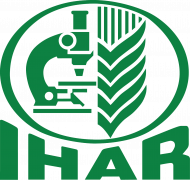Abstract
Phthorimaea operculella occurs in almost all potato-producing states in India and is considered to be a major potato pest in several states. The larva attacks all vegetative parts of the potato, and most economic damage occurs to potato tubers both before harvest in the field and during storage. The tuber damage in storage has been stated to range from 1 to 72.5% in the endemic states. In Karnataka and Himachal Pradesh, up to 100% losses in storage have been reported. In India, maximum moth activity in the spring (January–May) crop occurs during March–May, whereas in the summer (May–October) crop in hilly areas, peak activity occurs in October. Temperature is positively correlated, whereas RH has a negative influence. In stores, maximum activity occurs in July. Moderate temperature around 23–24 °C is conducive for oviposition and development. Development time from egg–adult varies considerably (20–165 days). In tropics and subtropics, 7–13 generations are completed annually. For its management, use of healthy seed, field sanitation, deep planting, and proper ridging contribute significantly. In India, generally, 1–2 insecticide applications are given for its control in spring and autumn (October–December) crops. Field releases of Copidosoma koehleri and Chelonus blackburni integrated with Bacillus thuringiensis and Phthorimaea operculella granulosis virus are effective in areas having moderate temperature and high RH. In storage, dry leaves of Eucalyptus, Lantana, Ageratum, Eupatorium, soapnut, and wheat straw offer significant reduction in infestation. CIPC is helpful in reducing losses due to sprouting, but it also indicates very good potential against P. operculella in storage.















